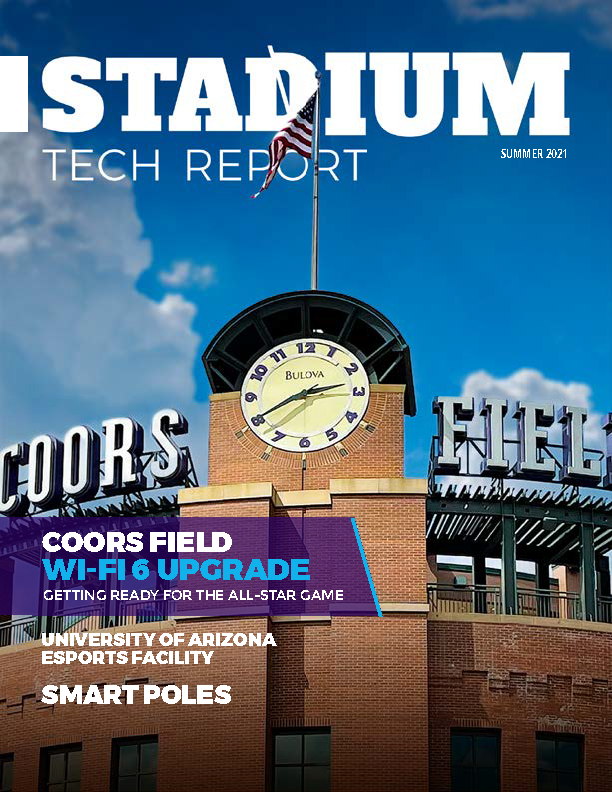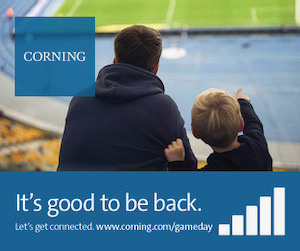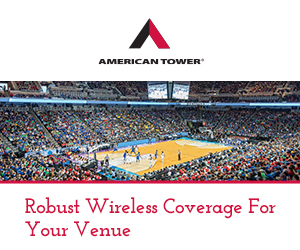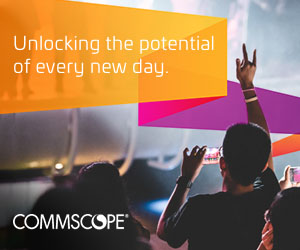“Nobody will ever have the perfect [network] install, and that’s part of the fun of it,” said John Avenson, vice president of infrastructure for the Minnesota Twins baseball club, in a phone interview with MSR. “The problem is not solvable as in, one year and you’re done. You need to be continuously improving.”
For the Twins, improving cellular connectivity was especially important since this year the club and the stadium will host baseball’s midsummer classic, the All-Star game. Thanks to help from InSite Wireless and DAS gear from TE Connectivity, Target Field’s DAS should be able to handle not just the overall growth in Twins fans’ wireless needs, but also the extra demands of a special event and all the selfies that go along with it.
“Fortunately, InSite and the carriers have been able to react quickly, and we should be ready for the test of the All-Star game,” said Dan Starkey, director for ballpark development and planning, in the same interview. “We’ll be ready to fully test the system.”
Wi-Fi and DAS, a perfect double play
As a new facility, Target Field was ahead of the curve when it came to Wi-Fi. On opening day the park had free Wi-Fi service for fans, with 225 access points initially available. “Back then that was a big number,” Avenson said. And while some carrier execs have been voicing an opinion that DAS is all that’s needed in a stadium, Avenson isn’t convinced.“At this point you need both Wi-Fi and DAS,” he said.
Though the Twins do a good job of promoting the Wi-Fi service, most fans in stadiums everywhere usually default first to a cellular connection, either because they don’t know about the Wi-Fi, or don’t want to be bothered with the process or aren’t sure how to connect. Since people still think they should be able to send pictures or watch videos over a cellular connection, even at a crowded ballpark, that means the DAS – the Distributed Antenna System – needs to keep pace with all the smartphones and tablets being used.
“Some fans put their phones away [when they come to the stadium] but the younger crowd does not do that,” Avenson said. “Nothing interrupts their need for a good [wireless] experience.”
 According to Avenson, even before the facility opened the IT team new that they wanted a neutral host partner to lead the DAS effort.
According to Avenson, even before the facility opened the IT team new that they wanted a neutral host partner to lead the DAS effort.
“It just made sense to us,” said Avenson of having a neutral host DAS supplier, since as he said, carriers can be like siblings who have to share a bedroom. “InSite really enables the carriers, so they don’t have to fight with each other [over technology deployments].
Verizon Wireless and AT&T, the two biggest cellular carriers in the U.S., were on the neutral host DAS at the start, and were later joined by Sprint and T-Mobile. And even though the park is fairly new, Avenson said everyone involved realized quickly that wireless demands were growing, meaning that an upgrade was needed sooner rather than later.
According to the team, the most recent upgrades were to add MIMO capability for 1900 and AWS 2100 MHz bands, as well as adding four additional sectors in the bowl for AT&T. The new DAS can also support newer 4G LTE technologies, the Twins said.
“It’s just part of the evolution of DAS,” said Starkey. “Once we realized we needed additional coverage and capacity, InSite and the carriers acted quickly.”
The downtown difference
Like many other stadiums and large public facilities, Target Field had to be creative in finding space for the DAS head end equipment.
“In 2008 and 2009, we thought we’d fit it [the DAS head end] in a corner but it grew to a larger space and then that wasn’t big enough,” said Avenson, who added that AT&T and Verizon each have 10 to 12 cabinets of back-end gear for their DAS operations. “When the building was being built in 2008, the architects were not aware that we’d be needing more space. It’s amazing how much space and power a DAS takes at the head end.”
Adding to the complexity of the Target Field deployment is the fact that the field is in the middle of downtown Minneapolis, with large office buildings peeking over the roof of the stadium. According to Avenson, carriers and the team had to perform a series of reconfigurations to antennas both inside the park and out, so that the macro metro cellular network didn’t interfere with the DAS network inside the stadium.
“When the macro network wants to invade [the stadium] you have to push the macro network out,” said Avenson. “If you’re Miller Park [the baseball field in Milwaukee] and you have a big parking lot around the stadium you can control your own destiny. Parks in the middle of cities have a much different challenge.”
Editor’s note: This profile was originally published on May 1, 2014. It is also included in our Stadium Tech Report for Q2 2014, which you can download for free from our site.










[…] Also if you are at the game live please send us a Wi-Fi and/or DAS network report from the new Target Field network … good luck Twins […]